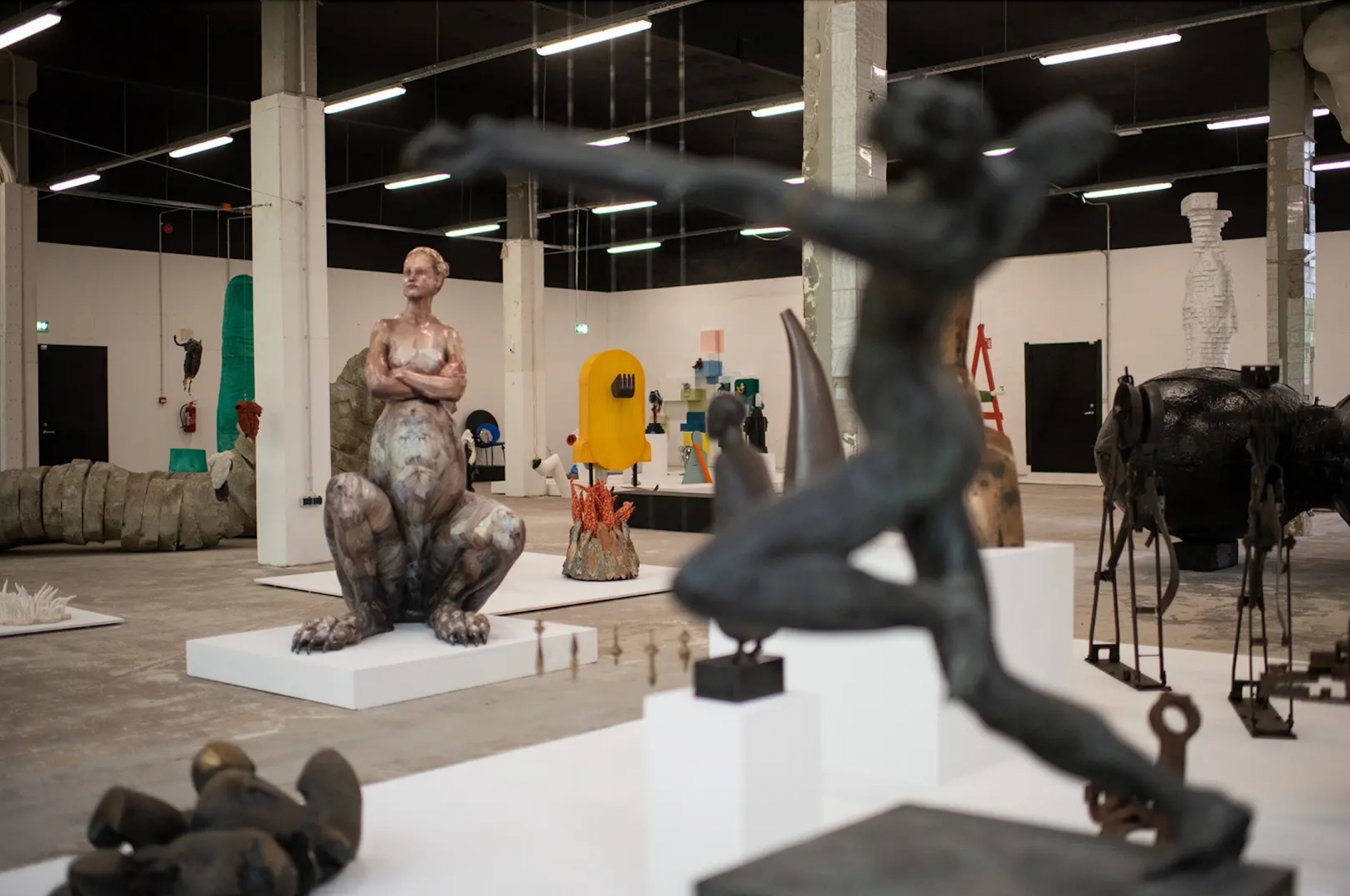Sculpture, just like any single representative of a nationality, is difficult to characterise and define in definitive terms. It is as if something in our collective memory dictates that as recently as a few decades ago, multi-dimensional art was a citizen that tended to be more on the traditional side and follow norms, and its more temperamental streak only manifested itself in the new century. In fact, while sculpture is usually perceived as conservative, new trends emerged in this discipline as early as the 1960s, with the non-figurative works by Edgar Viies as good examples of this development. The sculptures of Jaak Soans and Ülo Õun were influenced by pop art and expanded the expressive possibilities of plastic art. Historian Juta Kivimäe has described the period spanning the late 1960s and early 1970s as the golden age of Soviet era sculpture. The range of subjects increased and a large number of works with different materials and perspectives was created. The following decades saw the disappearance of the old generation, taking the bridge to the past with them. The essence of sculpture became more uncertain and changeable.
Although sculpture has often been overshadowed and it has taken the less trodden paths of modern art, this art form has always wanted to experiment and grow, come down from the pedestal, go outside or spread around spaces, meet other media. It has been ready for adventures and mingling, and real integration for a while now! Like a restless global citizen, it is rather impossible to keep sculpture within certain boundaries. In the case of this exhibition, too, one can wonder whether a work is a representative of the purebred sculpture or the installation family. In recent decades, sculpture has been increasingly advancing in unison with installation. Knowing the material and being skilled in handling it, that is, the basic expertise of a sculptor, and the ability of installation art to resonate with audio-visual arts has certainly benefited this tandem. Novel means of expression, mixing media and materials, discussions around public space sparked by monuments have only served as fresh fertiliser for sculpture. We can already reap the fruits, either juicy hybrids or classical and well-known flavours. This diverse assortment – both critical notes on ongoing cataclysms, such as the environmental crisis and wars, as well as humorous takes on mundane objects – is evident when comparing works by both established artists and the new generation. In any case, the future seems exciting and voluptuous for sculptural arts.
There are many ways to travel around the sculpture scene. Tour Sculpture is a tour that begins in the 1960s, picks up speed over the next decades and screeches to a halt in 2022. You can meet artists whose visual language is so familiar to us it could be included in textbooks, and works that deviate so much with their uncharacteristic style or choice of material to make you glance at your navigation device in surprise. The various faces of sculpture can be inspected at the constellation of heads at the exhibition, where more than 50 representatives of the DNA of sculpture are on display – bronze, plaster, chamotte, plastic, glass, wood, stone and many hybrids.
Tour Sculpture is where generations and installations, heads and pedestals, materials and fashions meet. Enjoy your tour!
Works by the following artists are exhibited: Elo Liiv, Art Allmägi, Edith Karlson, Jass Kaselaan, Seaküla Simson, Mati Karmin, Eike Eplik, Tiiu Kirsipuu, Jüri Ojaver, Terje Ojaver, Kaarel Kurismaa, Heleliis Hõim, Aili Vahtrapuu, Johannes Luik, Jevgeni Zolotko, Per William Petersen, Kris Lemsalu, Mare Mikof, Vergo Vernik, Ahti Seppet, Kirke Kangro, Sofia Fatahhova, Loora Kaubi, Aime Kuulbusch, Villu Jaanisoo, Berit Talpsepp-Jaanisoo, Uku Sepsivart, Lauri, Eneken Maripuu, Margus Kadarik, Leena Kuutma, Mari-Liis Tammi, Maigi Magnus, René Reinumäe, Anna Mari Liivrand, Kiwa, Gea Sibola-Hansen, Flo Kasearu, Eva Mustonen, Kelly Alloha, Ivan Zubaka, Ekke Väli, Jaak Soans, Hille Palm, Ellen Kolk, Sasha Tishkov, Anna Trell, Hannes Starkopf, Ülo Õun, Peeter Mudist, Edgar Viies, Anu Põder, Nora Raba, Endel Taniloo, Riho Kuld, Irina Rätsep, Anne Paberit, Elmar Rebane, Georgi Markelov, Erna Viitol, Signe Mölder.
Curated by Mara Ljutjuk and Bianka Soe
Design by Üla Koppel
Sound by Taavi Tulev
The exhibition is open at the Green Room (Roheline saal) of the Telliskivi Creative City from 3 June to 21 August 2022
Opening hours: Wed-Sat 12–20, Sun 12–18
The exhibition is part of the programme of the art festival “Ma ei saa aru” (I Don’t Understand).





